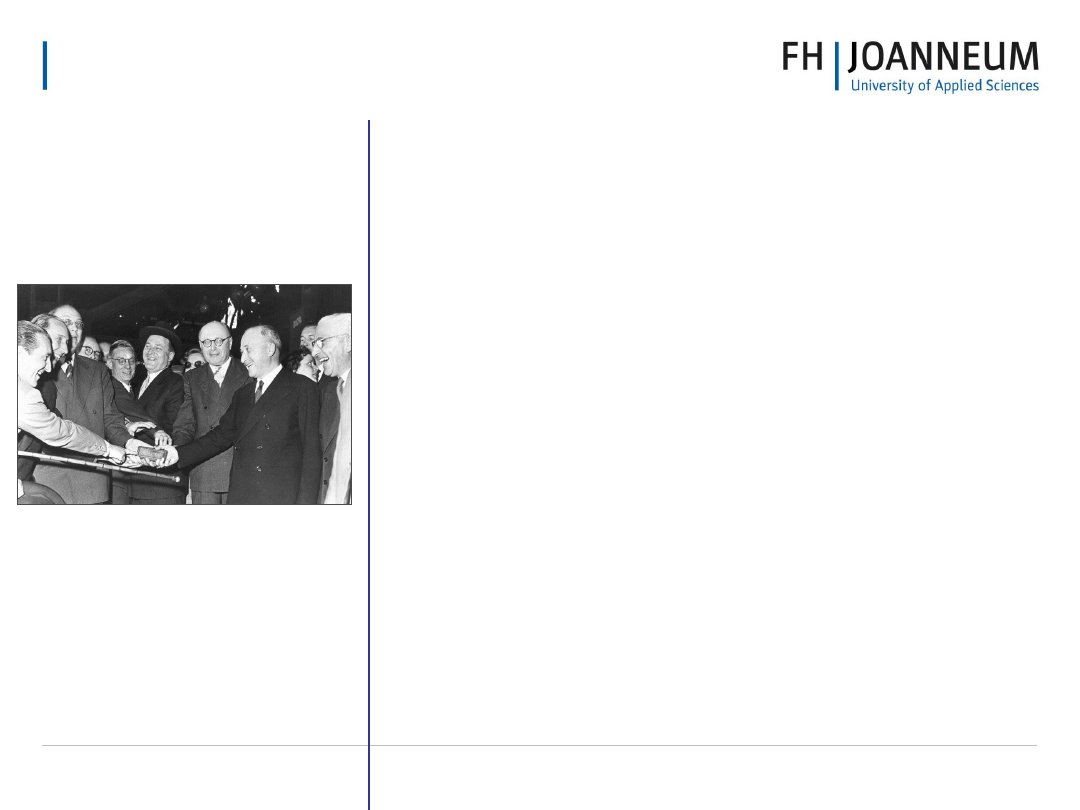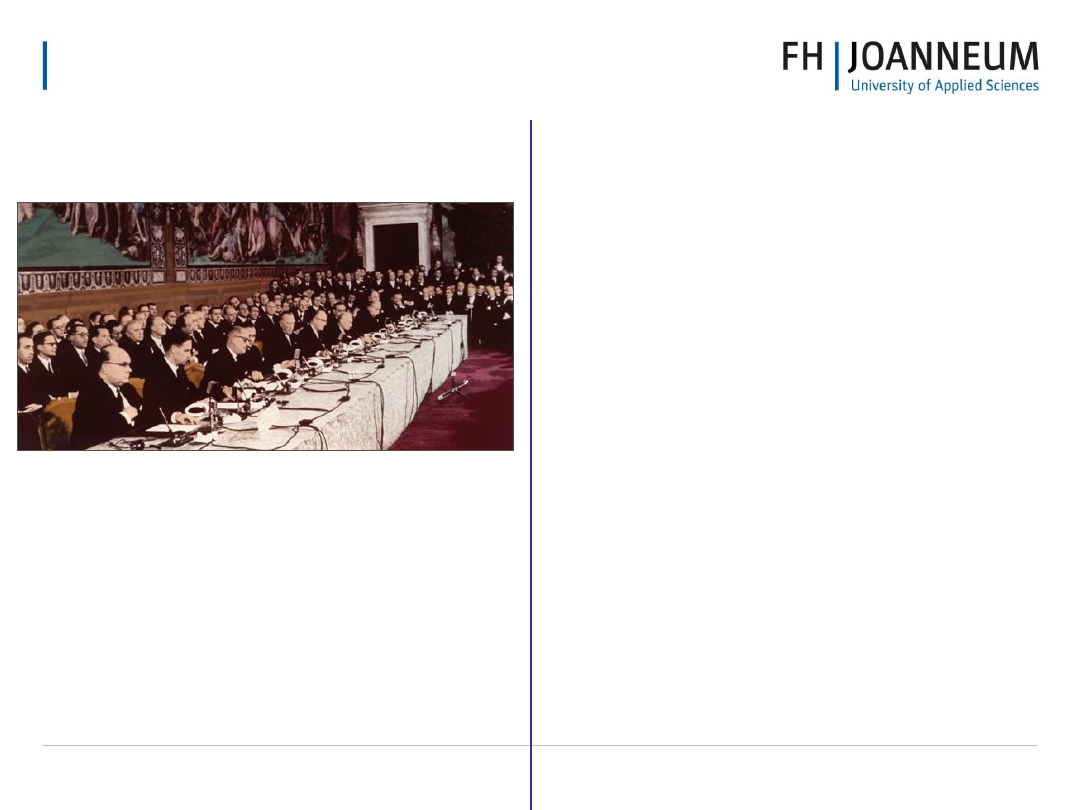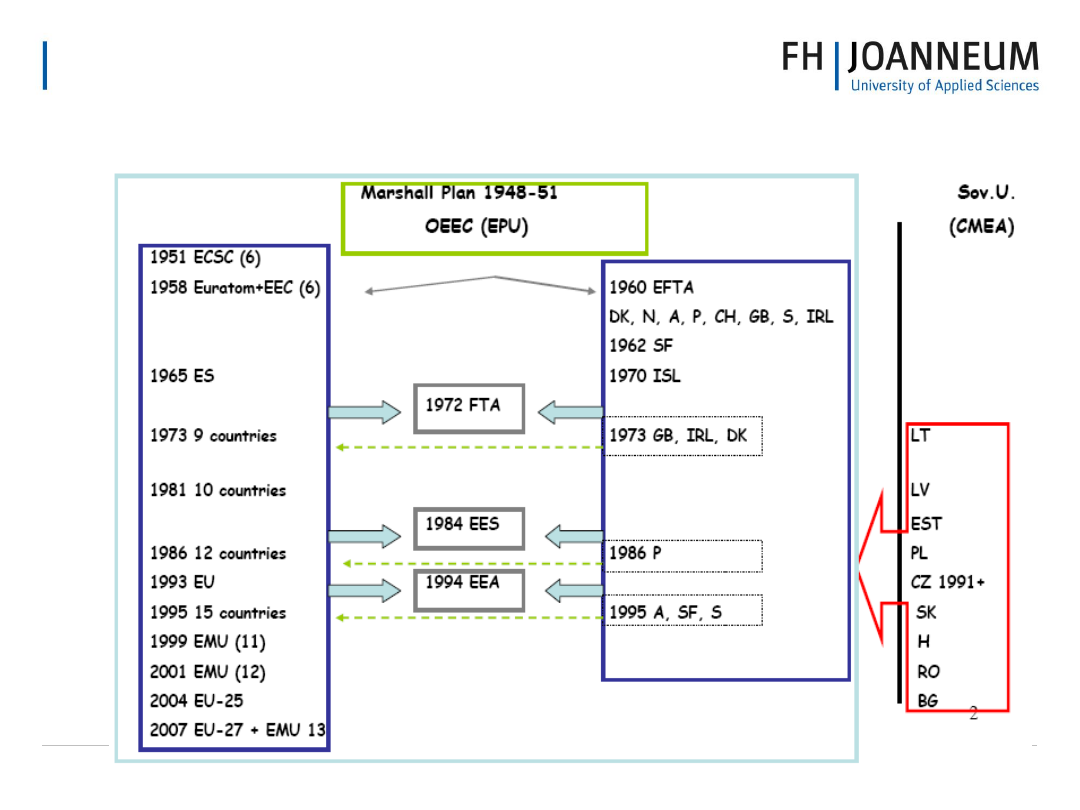ВУЗ: Не указан
Категория: Не указан
Дисциплина: Не указана
Добавлен: 07.04.2021
Просмотров: 269
Скачиваний: 1

www.fh-joanneum.at
MANAGEMENT
1951:
•
In the aftermath of World War II, the aim was to
secure peace among Europe’s victorious and
vanquished nations and bring them together as
equals, cooperating within shared institutions.
•
Based on a plan by French Foreign Minister
Robert Schuman.
•
Six founding countries – Belgium, the Federal
Republic of Germany, France, Italy, Luxembourg
and the Netherlands – signed a treaty to run
heavy industries (coal and steel) under common
management.
European Coal and
Steel Community
Jean Monnet and other leaders with
the first “European” ingot of steel

www.fh-joanneum.at
MANAGEMENT
Treaty of Rome
•
The six founding countries expanded
cooperation to other economic
sectors, creating the European
Economic Community (EEC) – or
“common market.”
•
As a result, people, goods, services,
and capital today move freely across
the Union.
1957:
Signing of the Treaty of Rome
www.fh-joanneum.at
MANAGEMENT
50 Years of EU Integration
Enlargement has:
•
Inspired reforms and consolidated common
principles of liberty, democracy, respect for
human rights, fundamental freedoms, the rule of
law, and market economy.
•
Enhanced the EU’s weight in the world and made
it a stronger and more attractive international
partner.
“Enlargement has been a
success story for the
European Union and
Europe as a whole. It has
helped to overcome the
division of Europe and
contributed to peace and
stability throughout the
continent.”
European Council
Declaration
Dec. 15, 2006
1957
2007
Member States
6
27
Population
174 million
493 million
Languages
4
23

www.fh-joanneum.at
MANAGEMENT
Integration Processes in Europe
www.fh-joanneum.at
MANAGEMENT
•
In 1957, the dominant element of West Europe's post-war trade
arrangement was sketched in when the Six signed the Treaty of
Rome and created the EEC. The Treaty was quickly ratified by
the six national parliaments and the organisation came into
existence January 1958.
•
Discussions of a wider West European free trade area
agreement soon broke down, leaving the 11 other OEEC
members—most of them small—on the sidelines.
•
Fearing the discrimination and marginalisation that might occur
if they faced the EEC bilaterally, seven of these ‘outsiders’
formed their own bloc in 1960, namely the European Free Trade
Association (EFTA). This co-ordinated reaction was greatly
facilitated by the leadership of a dominant country, namely the
United Kingdom.
Two Non-Overlapping Circles (1)